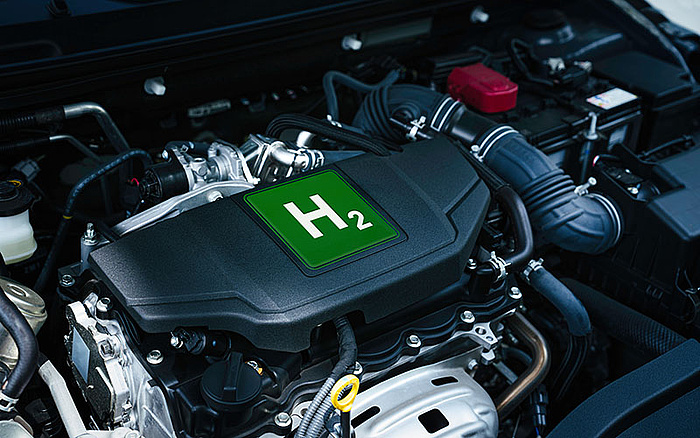
Lightning in a bottle – how IP law helps shape the future of energy
At first glance, it is easy to assume the energy sector is driven exclusively by need. Power is at the heart of everything, from home comfort to worldwide manufacturing — but what is at the heart of power?
Although consumer requirements and increased demand for renewable energy certainly drive the sector, Intellectual Property (IP) helps give it form and resilience. Companies will need to balance IP exclusivity with collaborative approaches, researcher compensation and equitable access to succeed in a fast-moving market. From this perspective, the future is not just about the science of energy but also the language and laws that protect it.
Our annual IP Trend Monitor study explored these issues and more in 2023. Top IP experts weighed in on disruptive technologies and the shifting social expectations that make them necessary — a particularly fascinating dynamic in the energy sector.
The motive forces behind change
According to Dennemeyer research, patent applications in the world of energy technology saw double-digit growth almost every year from 2001 to 2011, hitting annual filings of 89,731. Rates fell in 2013 and 2014, then increased again starting in 2015, the year of the Paris Agreement. The year 2020 saw 88,197 applications, and data indicates this growth is likely to continue through the 2020s, particularly in light of sociopolitical activity such as the European Green Deal.
This indicates important patterns in the relationship between IP and social priorities. Although environmental laws and treaties set the goals and make headlines, the intangible structure of patents is needed to bring such hopes to fruition in tangible ways.
However, there is a key issue here that defines much of the energy patent environment and, indeed, renewable energy efforts overall: Theory is one thing, but practical application is quite another. Patent growth and research from top organizations only tell part of a story that is actively being written by IP experts and innovators on the front lines of power lines.
Spoiled for choice: when variety hinders clarity
In contrast to the optimistic narrative of linear progress, respondents to our IP Trend Monitor survey were split on which renewable energy technology would dominate over the next five years. The highest level of agreement was for energy storage solutions at 36%. The next most popular selections were solar power (28%) and hydrogen fuel cells (20%). Wind power came in last with only 9%. These numbers differed slightly depending on the respondents' industry: 44% of corporate experts thought energy storage solutions would dominate, while law firm, trademark and patent specialists chose solar power at 44%, 39% and 33%, respectively.

According to a 2023 global report, although fossil fuel usage will remain elevated, "the momentum behind clean energy transitions is now sufficient for global demand for coal, oil and natural gas to all reach a high point before 2030."
This suggests noteworthy uncertainty surrounding the energy sector, with perspectives split on its trajectory — including what consumers will expect, how technology will advance and what the wider market will favor. Such ambiguity could be attributed to social, political and economic pressures such as:
- Failures to stay on track with Paris Agreement goals
- Ongoing conflicts in Eastern Europe and the Middle East
- Complicated tax credit rules
- High costs associated with labor and supply chains
- Economic instability, including interest and inflation
Whether regional or global, all of these adversities come into contact with a still-evolving approach to the protections afforded by IP law. Although 33% of our respondents indicated the biggest challenge in the energy industry would be "balancing the need for collaboration with the desire for exclusive IP rights," 35% of all respondents and 46% of those in C-suite / management positions expected two additional pain points to be equally influential:
- Navigating complex patent landscapes for renewable technologies
- Addressing IP infringement risks in emerging markets
Consequently, innovators must traverse a complicated scene of competing priorities, financial risks and political requirements just to feel confident submitting a patent application. However, the difficulties do not end there, as even IP law is still finding its feet in the battle between "perfect-world" idealism and cold practicality.
A closer look at real-world considerations
More careful analysis regarding IP in the field of energy, and in particular, renewable energy, highlights a number of practical concerns.
Rapid expansion
To start, with the increase in patent numbers for several technologies in the field of renewable energy comes the risk of so-called "patent thickets," where multiple patents overlap and cover similar technical solutions. Navigating these thickets can be problematic for companies and researchers, leading to possible legal disputes and hindering innovation.
Additionally, critics contend that the quality of patents within this sector can fluctuate, as certain patents are censured for being excessively broad or for lacking genuine novelty and an inventive step. Such variability sometimes results in legal disputes, again slowing down the pace of development.

That renewable energy technologies exist does not mean they are freely available for deployment. Unless mapped out, dense patent thickets can turn a solution that seems within easy reach into a legal headache.
Initiatives are underway to tackle all of these considerations, including the promotion of standardization, enhancement of patent quality and reforms to registration systems aimed at discouraging misuse. Meanwhile, some countries are exploring alternative approaches, such as open-source licensing for specific renewable energy technologies, to foster collaboration and widespread adoption.
Furthermore, as the renewable energy sector grows, so does the danger posed by patent trolls. These actors exploit patents for financial gain only, without intending to use the technology or allow others to do so. Their behavior is typically to acquire patents with the aim of initiating legal actions or threatening lawsuits against companies, alleging infringement. This practice has the potential to impede the inventive process and redirect resources away from crucial research and development efforts.
Both of these issues could be termed "growing pains" or, rather, "evolving pains" for a shifting industry. A third such headache is, in certain instances, how the lack of standardized technologies within the renewable energy domain creates obstacles to securing patents. Standardization plays a vital role in ensuring interoperability and compatibility across diverse systems, yet reaching a consensus on these specifications can be arduous. This complexity introduces uncertainty for individuals or entities seeking patents in the field.
Patent inconsistency
Renewable energy technologies frequently encounter varying patent regulations and requirements across jurisdictions. This can give rise to a convoluted and time-intensive procedure for companies working to secure global protection for their innovations. The absence of harmonization in particular contexts acts as a barrier to the effective enforcement of patents across international borders.
Innovations in flux
The relationship between energy, IP and ambitions for a cleaner future is not as straightforward as might be believed or wished.

Hydrogen combustion releases only water and some nitric oxides as emissions; however, almost all the hydrogen we use today is extracted from natural gas. The carbon dioxide released in this industrial process exceeds that of burning the fossil fuel itself.
The troubles and possibilities of a broad market
According to the International Energy Agency (IAE), the most common type of clean energy patent worldwide in 2021 related to industry energy efficiency or substitution, comprising 26.5% of the global total. Other years since 2000 have seen energy storage, solar generation and hydrogen and fuel cells top the list. Thus, it could be said that there is no single invention, innovation or focus area that defines green energy, which can be a positive and negative thing in turn.
Researchers have long debated how competition affects the price of innovation, but the stakes are considerably higher in the energy sector. If competition is welcome, a broad market may not be because there is no single focus for innovation. Conversely, if competition is a hindrance, a broad market may be beneficial because every player has room to experiment and create without the crush of market pressures.
The dilemma is that each of these statements could be true or false depending on everything from the geopolitical region to the specific technical sphere. The renewable energy sector is so heavily based on fast-moving research, technology and social trends that it is difficult to make long-term assumptions about the competitive market. Innovation, therefore, is predicated on a huge number of factors that may not come into play for other industries — and, as such, projections used elsewhere cannot be mapped exactly onto the energy sector.
A balance between protection and progress
To take an example of these intermeshed forces, it is known how patent courts can issue orders against infringers, banning them from making and selling a contested product. On the other side, the owners of the infringed patent may be entitled to damage compensation. However, in exceptional cases, it could happen that the court allows for "voluntary infringement," that is, permits the infringer to continue with production in view of conspicuous royalties to be paid to the patent owner. This often occurs when it is in the public's interest not to delay an important and already started project, such as may be seen in the renewable energy sector. In fact, this is what happened in a recent dispute between Siemens Gamesa Renewable Energy A/S and General Electric Co. regarding a wind turbine project. In his memorandum and order, Judge William G. Young of the United States District Court for the District of Massachusetts encouraged both parties to cross-license their patents for the commonweal.

Although blockbuster litigation make headlines, the patent system can also incentivize cooperation in important areas of research. Through cross-licensing, organizations are able to exchange the results of their respective specialisms, allowing for faster progress.
This was not the first case of its kind, nor is it likely to be the last. The problem, however, is that the outcomes will not stay within the confines of the IP industry or even the energy sector overall; decisions made in this space have the potential to help or hamper environmental policies, progress toward green goals and more.
As such, the question is not simply one of protection versus progress. It is about the role of patent law in social, political, economic and environmental responsibility — considerations that go far beyond the typical need to protect market shares.
What comes next for energy innovators?
With so much vagueness, it may seem that the interplay between renewable energy and the IP laws that protect it will become increasingly complicated or expensive. However, our findings indicate that experts, innovators and inventors are dedicated to a brighter future — even if there are many unanswered questions.
Filed in

How accurate were past forecasts about IP in 2025? We revisit the EPO's 2007 study, exploring its boldest scenario where public funding and open access challenge the patent system.



